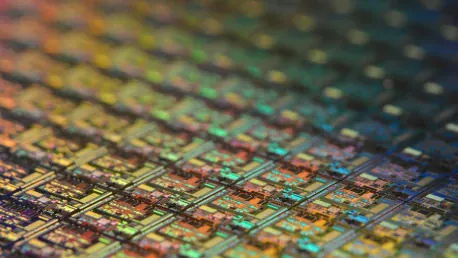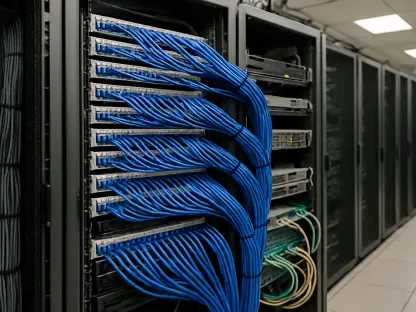Can Flexible Chips Drive the Internet of Everything Revolution?
The transformative potential of flexible chips could be the key to overcoming the current limitations of semiconductor technology, which have thus far hindered the realization of the Internet of Everything (IoE). While the Internet of Things (IoT) has enjoyed substantial growth and is projected to reach a valuation of $12.5 trillion by 2030 according to McKinsey, the more expansive and interconnected vision of IoE has remained constrained by semiconductor supply issues and the inefficiencies of current manufacturing processes. These obstacles have kept the dream of a fully interconnected world at bay, but innovations in semiconductor technologies, particularly flexible chips, could be the game-changer needed to drive the IoE revolution.
Current Challenges in the Semiconductor Industry
The COVID-19 pandemic highlighted the fragility of global supply chains, particularly in the semiconductor industry, causing disruptions that reverberated through various sectors. Assembly lines came to a halt as chip shortages became critical, emphasizing how deeply embedded semiconductors are in the fabric of modern life. From automotive manufacturing to consumer electronics, the dependence on a steady supply of chips was starkly underscored, revealing vulnerabilities that had long been overlooked. This disruption showcased the urgent need for more resilient and agile semiconductor production capabilities.
Legacy chips, which are far from obsolete, continue to be essential for new applications. However, their production is plagued by outdated equipment that makes scaling up a cumbersome process. When it comes to expanding production capacity, the construction of new fabs is not only capital-intensive but also a time-consuming endeavor, often taking years and tens of billions of dollars to complete. Additionally, these older facilities were not designed with modern environmental standards in mind, adding layers of complexity to efforts aimed at reducing carbon footprints and improving energy efficiency. These challenges collectively stymie the growth required to meet the burgeoning demand for semiconductors in an IoE-enabled world.
The Promise of Flexible Chips
Innovative materials and novel fabrication techniques have ushered in a new era for semiconductors in the form of flexible chips. Unlike traditional silicon-based chips, flexible chips leverage thin-film technology and a spin-coating process, allowing them to be produced at much lower temperatures. This advancement not only simplifies the manufacturing process but also offers numerous environmental benefits. The spin-coating technique involves using polyimide and a glass carrier, minimizing the need for high-temperature processes that are typically necessary for silicon chips.
The environmental advantages of flexible chips are significant. This manufacturing method substantially reduces energy and water usage, curtails the need for harmful chemicals, and cuts carbon emissions dramatically. Moreover, flexible chips can be produced in as little as four weeks, making rapid design iterations possible and slashing non-recurring engineering costs. This accelerated production timeline lowers the barriers to innovation and entry, enabling more companies to explore and develop IoE applications. With flexible chips, the speed and efficiency of bringing new smart, connected devices to market could revolutionize various industries.
Applications in Consumer Goods and Healthcare
In the Fast-Moving Consumer Goods (FMCG) sector, the implications of flexible chips are far-reaching. These chips can facilitate item-level product verification, allowing consumers to authenticate the origin and quality of goods with ease. Personalized consumer interactions become possible, enhancing the overall user experience by transforming everyday products into smart, connected devices. The integration of flexible chips into consumer goods could not only streamline supply chains but also provide valuable data on consumer preferences and behavior, driving further innovation in product design and marketing strategies.
The healthcare sector stands to benefit immensely from the adoption of flexible chips as well. Their flexibility makes them ideal candidates for wearable patches that can monitor a range of health conditions, including heart anomalies and wound healing. These wearable devices can provide real-time data to healthcare providers, enabling more accurate diagnoses and timely interventions. Improved patient outcomes and more efficient healthcare systems are just some of the potential benefits. As the healthcare industry increasingly embraces digital transformation, flexible chips could become a cornerstone of patient-centered care, offering new ways to monitor, manage, and treat health conditions.
Supporting the Circular Economy
Flexible chips also play a crucial role in advancing the circular economy, which is aimed at eliminating waste and continually using resources. By improving the recyclability and tracking of reusable packaging, flexible chips support sustainable practices that contribute to environmental conservation. The ability to embed intelligence into packaging facilitates more effective sorting and recycling processes, reducing the environmental footprint of consumer goods. This integration helps create a closed-loop system where materials are reused and recycled, rather than ending up in landfills.
The scalability and low production costs of flexible chips make it feasible to incorporate intelligence into a diverse array of everyday objects. This widespread deployment has the potential to generate large volumes of data, which can then be used to refine AI models. The resulting efficiencies and actionable insights can transform industries from logistics to retail, enabling more sophisticated and responsive systems. The applications of flexible chips in the circular economy are myriad and underscore their importance in driving forward sustainable practices while enhancing the functionality and intelligence of everyday objects.
Broader Implications and Future Prospects
The transformative potential of flexible chips could be pivotal in overcoming the current obstacles in semiconductor technology that have limited the realization of the Internet of Everything (IoE). While the Internet of Things (IoT) has seen substantial growth and is estimated by McKinsey to reach a $12.5 trillion valuation by 2030, the broader and more interconnected vision of IoE has been hampered by semiconductor supply issues and inefficiencies in today’s manufacturing processes. These challenges have kept the dream of a fully interwoven world out of reach. However, breakthroughs in semiconductor technologies, particularly the development of flexible chips, could be the revolutionary force needed to propel the IoE. Flexible chips offer a new horizon of possibilities by enabling more efficient and adaptive designs, which could ultimately make the interconnected world of IoE a reality. Advances in these technologies promise to address current bottlenecks, paving the way for a fully integrated global network.









